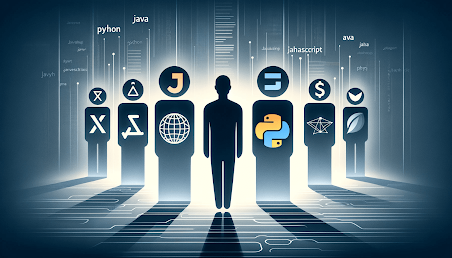The Evolution of Programming Languages
The Evolution of Programming Languages: From Assembly to Modern Day
Programming languages are the backbone of the digital world, enabling us to create software that powers everything from smartphones to space exploration. Over the decades, these languages have evolved dramatically, each new generation building on the strengths and addressing the weaknesses of its predecessors. This blog explores the fascinating journey of programming languages, from the early days of assembly language to the sophisticated and versatile languages of today.
The Birth of Assembly Language
The story of programming languages begins with assembly language, which emerged in the early 1950s. Assembly language is a low-level programming language that is closely tied to a computer's machine code instructions. It uses mnemonic codes and labels to represent machine-level instructions, making it slightly easier for humans to write and understand.
Features of Assembly Language:
- Low-level operations: Assembly allows direct manipulation of hardware and memory, giving programmers fine control over system resources.
- Speed: Programs written in assembly language are fast and efficient because they are translated directly into machine code.
- Complexity: Writing in assembly is time-consuming and error-prone, requiring detailed knowledge of the computer's architecture.
The Rise of High-Level Languages
The limitations of assembly language led to the development of high-level programming languages. These languages are designed to be more abstract and human-readable, allowing programmers to write code more efficiently.
Fortran (1957):
- Purpose: Fortran, short for "Formula Translation," was developed for scientific and engineering calculations.
- Impact: It introduced concepts like loops and conditionals, making programming more accessible and less error-prone.
COBOL (1959):
- Purpose: COBOL, or "Common Business-Oriented Language," was designed for business applications.
- Impact: It focused on record-processing and data management, which made it popular in business and government applications.
The Procedural Paradigm
The 1960s and 1970s saw the rise of procedural programming languages, which structured programs as a series of procedures or functions.
C (1972):
- Purpose: Developed by Dennis Ritchie at Bell Labs, C became one of the most influential programming languages.
- Impact: Its efficiency, flexibility, and portability made it ideal for system and application programming. C introduced structured programming constructs, such as loops, conditionals, and functions, which influenced many subsequent languages.
Pascal (1970):
- Purpose: Developed by Niklaus Wirth, Pascal was designed for teaching structured programming.
- Impact: It emphasized good programming practices and influenced the development of later languages, such as Modula-2 and Ada.
The Object-Oriented Revolution
The 1980s and 1990s brought a significant shift with the advent of object-oriented programming (OOP). OOP languages organize code into objects that encapsulate data and behavior, promoting reusability and modularity.
C++ (1985):
- Purpose: Bjarne Stroustrup developed C++ as an extension of C, adding object-oriented features.
- Impact: C++ provided the benefits of OOP while retaining the power and performance of C, making it suitable for system and application programming.
Java (1995):
- Purpose: Developed by Sun Microsystems, Java was designed to be platform-independent and secure.
- Impact: Java's "write once, run anywhere" philosophy, along with its robust standard library and garbage collection, made it a popular choice for web and enterprise applications.
Modern Programming Languages
The 21st century has seen the emergence of new programming languages that build on the principles of their predecessors while introducing modern features to meet the demands of contemporary software development.
Python (1991):
- Purpose: Created by Guido van Rossum, Python emphasizes readability, simplicity, and versatility.
- Impact: Python's clear syntax and extensive standard library have made it a favorite for web development, data science, artificial intelligence, and automation.
JavaScript (1995):
- Purpose: Originally developed by Brendan Eich for web development, JavaScript enables dynamic and interactive web pages.
- Impact: JavaScript has become the backbone of web development, evolving into a full-fledged programming language with frameworks like Node.js, React, and Angular.
Rust (2010):
- Purpose: Developed by Mozilla, Rust aims to provide memory safety and concurrency without sacrificing performance.
- Impact: Rust's emphasis on safety and performance makes it ideal for systems programming, particularly in contexts where security and reliability are critical.
Go (2009):
- Purpose: Created by Google, Go (or Golang) was designed for simplicity and efficiency in concurrent programming.
- Impact: Go's simplicity, efficiency, and strong support for concurrency have made it popular for cloud services, DevOps, and scalable web applications.
The Future of Programming Languages
As technology continues to evolve, so too will programming languages. Emerging trends include:
1. Language Interoperability: Languages like Kotlin and TypeScript are designed to interoperate with existing languages (Java and JavaScript, respectively), facilitating adoption and integration. 2. Domain-Specific Languages (DSLs): DSLs like SQL and R are tailored for specific tasks, providing powerful tools for niche applications. 3. Machine Learning and AI Integration: Languages and frameworks that simplify the development and deployment of machine learning models, such as TensorFlow and PyTorch, are becoming increasingly important. 4. Increased Focus on Security: As cyber threats evolve, languages that prioritize security and safety, such as Rust, will play a crucial role in developing secure software systems.
Conclusion
The evolution of programming languages reflects the ongoing quest for more efficient, powerful, and user-friendly tools to build software. From the early days of assembly language to the versatile and sophisticated languages of today, each generation of programming languages has brought new capabilities and paradigms. As we look to the future, continued innovation in programming languages will be essential to meeting the challenges and opportunities of an increasingly digital world.




Comments
Post a Comment